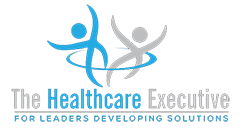The Evolution of Medical Devices: C-suite Strategies for Integration and Compliance

The Evolution of Medical Devices: C-suite Strategies for Integration and Compliance
Introduction
The rapid advancement of medical device technology presents significant opportunities and challenges for healthcare organizations. As we look ahead to 2024, C-suite executives must strategically navigate the integration of these innovations while ensuring compliance with regulatory standards. This blog will discuss effective strategies for healthcare leaders to manage the evolution of medical devices within their institutions, optimizing patient care and operational efficiency.
Understanding the Impact of Medical Device Innovation
Innovations in medical devices, from wearable health monitors to robotic surgical tools, have transformed patient care by improving diagnostic accuracy, treatment outcomes, and patient engagement. However, integrating these technologies requires careful planning to manage costs, training, and regulatory compliance.
Strategies for Effective Integration of Medical Devices:
- Conduct Thorough Market Research:
- Stay informed about emerging technologies and trends in medical devices. Understanding what’s new and evaluating its potential impact on your operations is crucial.
- Assess Compatibility and Integration Needs:
- Evaluate how new devices can integrate with existing systems, such as electronic health records (EHRs) and other hospital IT infrastructure. Consider compatibility, data flow, and interoperability.
- Develop a Comprehensive Implementation Plan:
- Create a detailed plan for the deployment of new medical devices, including timelines, budgeting, staff training, and pilot testing phases. This plan should also include strategies for scaling up successful implementations.
- Ensure Regulatory Compliance:
- Keep abreast of regulatory requirements related to medical devices, including FDA approvals, HIPAA compliance for data security, and international standards if applicable. Ensuring compliance not only avoids legal pitfalls but also enhances patient safety.
- Invest in Staff Training and Development:
- Provide ongoing training for medical staff to ensure they are proficient in using new devices. Well-trained personnel are crucial to maximize the benefits of new technologies and maintain high standards of patient care.
- Foster Collaboration with Manufacturers:
- Develop strong relationships with device manufacturers to gain better support, training, and possible customization of products to fit your specific needs. This collaboration can also be beneficial for staying informed about upgrades and enhancements.
- Monitor Performance and Gather Feedback:
- Implement mechanisms to monitor the effectiveness of newly integrated devices. Collect feedback from both staff and patients to assess the impact on patient care and identify areas for improvement.
Challenges in Medical Device Integration:
- Financial Constraints: The high cost of cutting-edge medical devices can be a barrier, necessitating careful financial planning and possibly seeking alternative funding sources like grants or partnerships.
- Technical Issues: Integration with existing systems can pose technical challenges that require expert IT solutions.
- Cultural Resistance: Changes in routine and the introduction of new technologies can meet resistance from staff accustomed to traditional methods.
Conclusion
The integration of advanced medical devices into healthcare settings is a complex but rewarding endeavor. C-suite executives play a essential role in steering these initiatives toward success by ensuring strategic planning, comprehensive training, and adherence to regulatory standards. By embracing these technologies, healthcare leaders can significantly enhance patient care and operational efficiency.
Call to Action
Healthcare executives are encouraged to initiate a strategic review of their current technology and device management practices. Engaging with stakeholders at all levels, from IT staff to frontline healthcare workers, will be essential in successfully integrating and maximizing the benefits of new medical devices in your organization.



